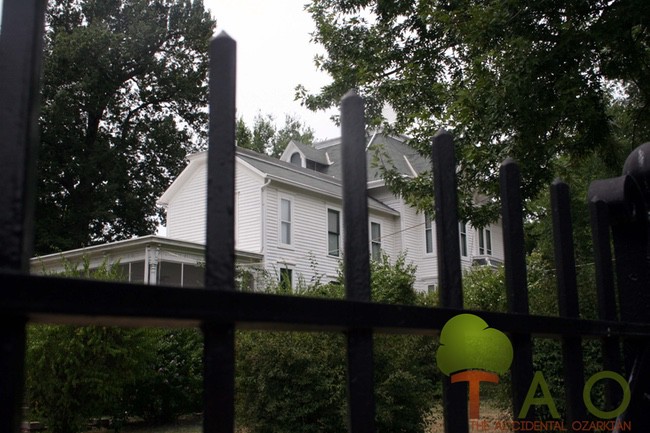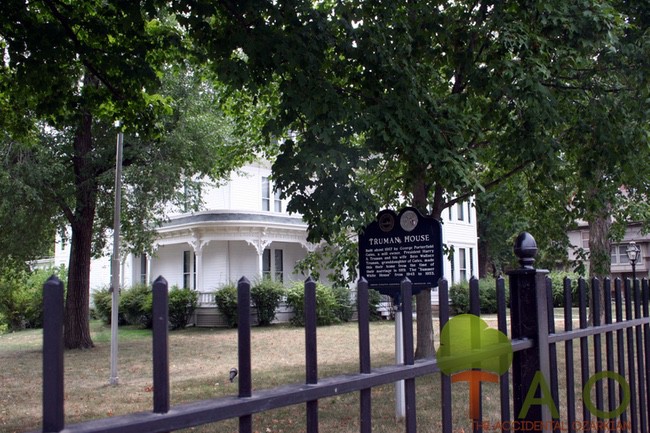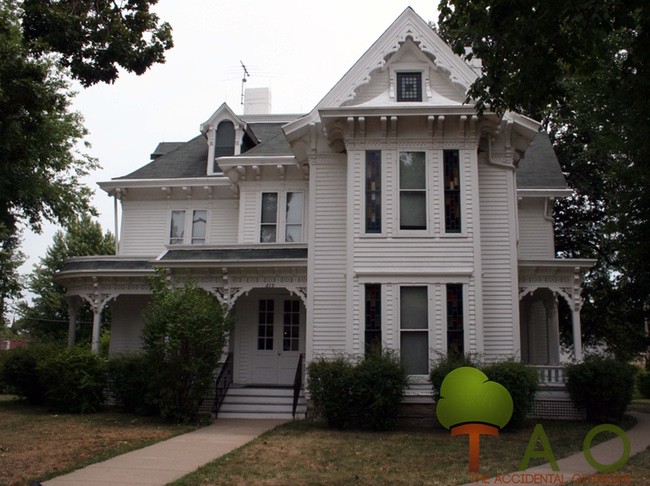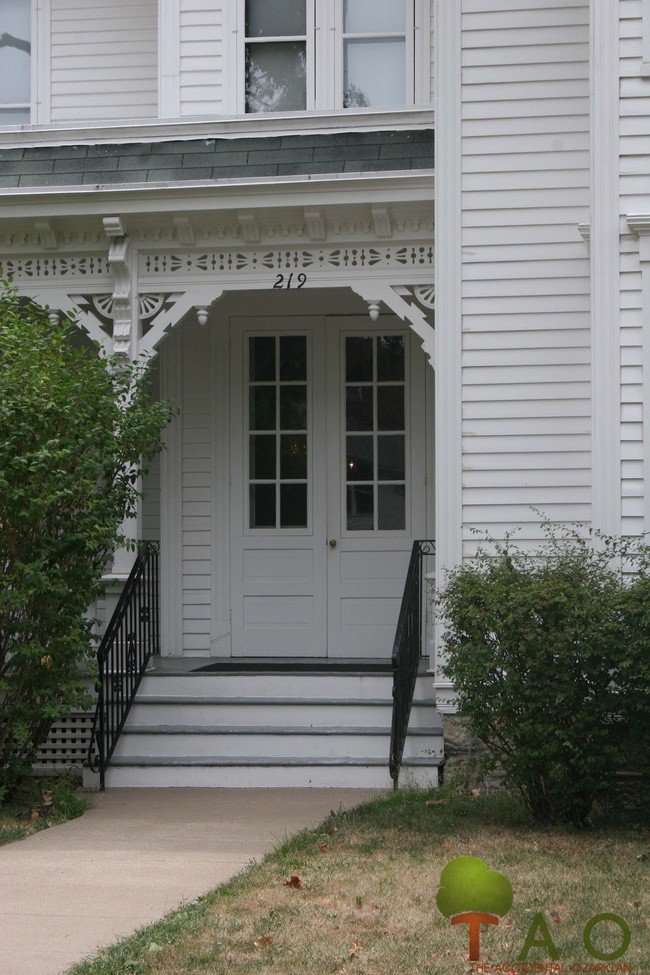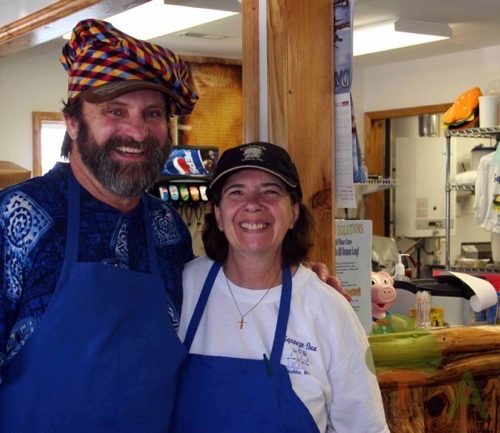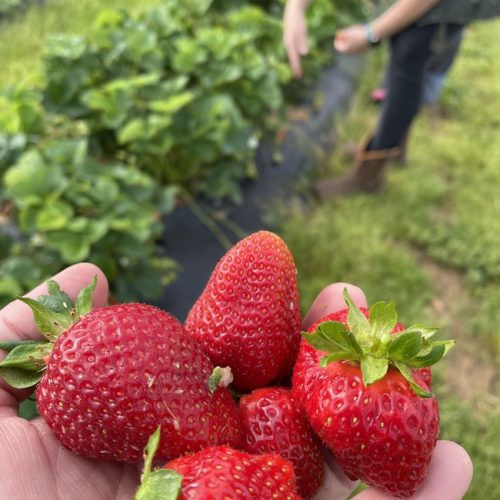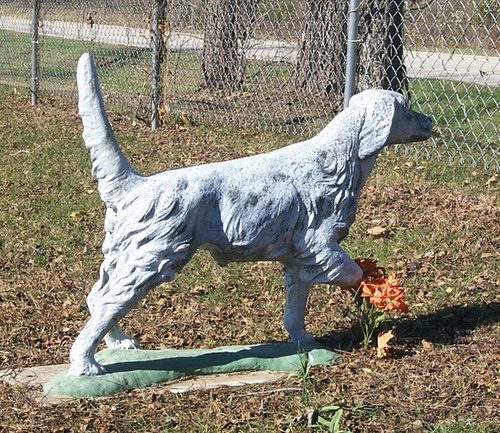Walk through the doors of Harry S Truman’s house in Independence with me on this trip.
The park ranger from Anchorage adjusted his Smokey Bear hat, ordered us to spit out our gum and admonished us not to touch anything in the house. Then he led us single file to the back door of the house of Harry and Bess Truman on 219 N. Delaware in Independence.
My daughter and I took a mini-vacation to Independence last week. Our first stop was at the Truman Visitor Center in downtown Independence, to watch a 12-minute slide show on the life and times of Truman, the 33rd president, and to buy our tickets for the tour of the house.
A black wrought iron fence, erected shortly after newly elected President Truman came back to what he called the “Summer White House” with Bess, surrounds the home. His security (no Secret Service at that time) detail deemed that he needed a fence to keep him from his adoring public, some would get close enough to pick buttons off his jacket and steal his pocket-handkerchief.
Truman has been called the “Cold Warrior” by author/historian David McCullough, who also ranked him as number 5 in the category of great presidents. Although Truman’s actions as the Commander in Chief who decided to drop the atom bomb on Hiroshima may be debated among historians for generations to come, it is perhaps how he lived his life outside of the presidency that warms Americans hearts. He represents Americana – a farm boy who served his country first as a soldier and then as a statesman.
It is at his home in Independence and through the anecdotes told by the tour guides that another generation may come to admire this president. When he returned to Independence, according to a document online at the Truman Library, “his approval rating was the lowest of any president in the 20th century, even lower than Nixon’s.”
Bess Truman’s family had owned the house for years, and she and Harry lived in it after they were married. Their only child, Margaret, was born in the house. In one of the many letters that Truman wrote to Bess, he claimed, “It seems like a hollow week if I don’t arrive at 219 North Delaware at least one day in it.”
Conditions of Bess Truman’s will, for she died 10 years after Truman died in 1972, state that the upstairs is to be kept available for visits from Margaret at her disposal “for no more than 7 days at a time.” Therefore, visitors are not allowed upstairs, as Margaret is 82 and lives in New York City. She has not visited Independence in about 10 years.
Margaret chose the color and painted the kitchen cabinets and trim work – a combination of candy apple and wedding mint green – a color to which the park ranger says “she regrets.” Truman, on the other hand, added to the disastrous décor by choosing the red, white and blue wallpaper because he said it looked “patriotic.” He chose the paper without taking a sample into the kitchen first. Even the ceiling is papered with the busy pattern, making the room seem as though it is in motion.
A dining room cabinet holds the official presidential china. Truman had the head of the eagle on the presidential seal turned the opposite direction, so that it faced the olive branch instead of the arrows, because he thought the eagle looked less warlike that way. He ordered the same done with the Green Room rug in the White House. No president since has ever ordered that the eagle’s head be turned back.
Also in the dining room, two potted plants stand near the window. These plants have been nurtured and kept alive since Bess Truman’s death in 1982 and remain as she placed them nearly 25 years ago.
In the parlor sits a Steinway baby grand piano. Supposedly, as a boy, Truman imagined a life as a concert pianist. He wished the same for his daughter, and so for her eighth Christmas, he bought her the piano. She wanted a train set. The piano accompanied the Trumans to the White House and when one leg fell through the floor, the entire Executive Mansion was remodeled.
Also in the parlor hangs the original first lady portrait of Bess, which never should have left the White House. When a representative from the White House called Truman and asked him to send the portrait back, he told him – in colorful language – that the portrait was not going to leave the house. A replica hangs in the White House.
By looking out through the front windows, you can see across the street to the house where Truman’s aunt lived and where he stayed when he visited her. A few doors down the street is the brick house where the Secret Service detail lived. The Secret Service came on duty in the 1970s and were only allowed in the house if summoned. Bess Truman had “panic buttons” installed throughout the house. She would, though, invite the agents over to watch baseball in the parlor with her.
 Parked outside in the detached garage is the car that Truman purchased six months before he died, a 1972 Chrysler Newport Royal. Truman had his license plate from the presidency “5745” – the number for V.E. Day on May 7, 1945 – transferred to the car.
Parked outside in the detached garage is the car that Truman purchased six months before he died, a 1972 Chrysler Newport Royal. Truman had his license plate from the presidency “5745” – the number for V.E. Day on May 7, 1945 – transferred to the car.
Perhaps that car and its license plate is one of the most poignant remembrances of Harry and his house. The tour took about 20 minutes, but made impressions that will last a lot longer.
Learn more about the Harry S Truman National Historic Site. You may view photos of the interior here, as well.
First published in 2006.

